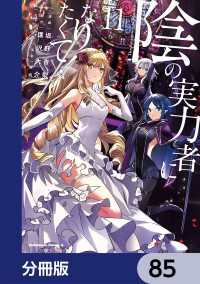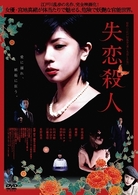Full Description
Texts for the Stagetextbook that contains multiple essays on a number of geographically diverse, historically significant dramas and dramatists. These critical essays cover some of the central plays treated-and central issues raised-in today's dramatic literature courses and will provide students with practical models to help them improve their own writing and analytical skills. The author is a "close reader" committed to a detailed yet relatively objective examination of the structure, style, imagery, and language of a play. Moreover, he is concerned chiefly with dramatic analysis that can be of benefit to directors, designers, and even actors-that is, with analysis of character, action, dialogue, and setting that can be translated into concepts for theatrical production, or that can at least provide the kind of understanding of a play with which a theater practitioner could fruitfully quarrel. Texts for the Stage: Studies in Script Analysis contains a useful critical apparatus: bibliographies, a glossary of dramatic terms, a guide to play analysis, topics for writing and discussion, and a comprehensive index.
Contents
Introduction A Step-by-Step Approach to Script Analysis Part 1. Locus and Lineage. Key Analytical Question: "What is the place of a play or plays in a dramatist's oeuvre and in the canon of Euro-American drama generally, and to what extent was this play shaped or influenced by earlier dramatic works by other authors?" "Postwar Italian Drama and the Theater of Carlo Terron" "Fanshen, Western Drama, and David Hare's Oeuvre, 1970-1981""Sam Shepard and the `Buried' Domestic Drama of Buried Child" Part 2. Re-evaluation and Influence. Key Analytical Question: "What is the place of a play in a dramatist's oeuvre and in the canon of Euro-American drama generally; and to what extent did this play influence (or was it influenced by) other works by its author, or has it influenced subsequent works by other playwrights?" "Strindberg, Miss Julie, and the Making of Modern Drama" "Jarry, Ubu Roi, and the Modern Theater""The Difficult B.B., The Complex E.T.: Rethinking the Theory and Practice of Brechtian Drama and Theater"Part 3. Character and Role.Key Analytical Question: "What is the dramatic function of a particular character: why is this character in the play, and what does he or she contribute to the development of its theme?" "The Chorus in Greek Tragedy . . . and Beyond, with Special Reference to Sophocles' Oedipus Tyrannos" "Friar Laurence in Shakespeare's Romeo and Juliet" "The Fate of Jessica in Shakespeare's The Merchant of Venice" "The Pious Peacockery of Johnny Boyle in O'Casey's Juno and the Paycock" "The Jew That Miller Drew: Religion, Ethnicity, and Miller's Death of a Salesman" "Nick in Albee's Who's Afraid of Virginia Woolf?""The Mexican Woman in Williams' A Streetcar Named Desire""The Ghost in Bond's Lear" "A Soldier's Play, A Soldier's Problems: Notes on the Charles Fuller Play""As You Like It: As I Like It"Part 4. Authorship and Adaptation.Key Analytical Question: "How has one work been wholly or partially adapted from another, as in the case of a play made into a film or a play derived from other plays, and to what extent are the changes in the new work aesthetically justified?" "American Drama/American Cinema: The Cases of Hellman's The Little Foxes, Griffith's Way Down East, and Mamet's Edmond" "Luis Rafael Sanchez's Drama The Passion of Antigona Perez and the Portable Antigone" "Shakespeare on Film: Branagh's Henry V and Love's Labour's Lost, Almereyda's Hamlet, Taymor's Titus, Radford's The Merchant of Venice, and Hoffman's A Midsummer Night's Dream""The Unbearable Light-ness of Being: Gertrude Stein's Doctor Faustus Lights the Lights in Light of Goethe, Marlowe, and the Twentieth Century"Part 5. Imagery, Aurality, and Allusion. Key Analytical Question: "How would you describe the use and function of visual imagery, as well as language or sound and gesture or movement, in a particular play or group of plays?" "The Nature of Drama, or Drama and Nature: Notes on Steinbeck's Of Mice and Men, Wilder's Our Town, O'Neill's Hairy Ape, Williams' Glass Menagerie, and Miller's Death of a Salesman""Bourgeois Realism, Imagistic Abstraction, and the Drama of Harold Pinter" "Kandinsky's The Yellow Sound as a Total Work of Art: Reception and Interpretation""`Right Up into the Skies': Transfiguration and Ascent in Shaw's Major Barbara, Misalliance, and Saint Joan"Part 6. Comparison and Contrast.Key Analytical Question: "Concerning two plays similar in style, structure, or meaning, what are the differences in socio-historical context between them (if there are any), and which thematic threads do they share?""Parallelism and Divergence: The Case of Goldsmith's She Stoops to Conquer and O'Neill's Long Day's Journey into Night""Ibsen's Ghosts and Sophocles' Oedipus Tyrannos" "The Endings of Ibsen's Hedda Gabler and Ghosts" "Simon Harford in O'Neill's A Touch of the Poet and More Stately Mansions" "Thomas's Under Milk Wood in Light of Wilder's Our Town""Walcott's The Sea at Dauphin and Synge's Riders to the Sea: A Comparison" "Orton's Loot and Shakespeare's Hamlet""Mamet's Glengarry Glen Ross and Selling in American Drama""The Threepenny Opera: Begging for Brecht, not Blitzstein""To Be or Not to Be . . . a Tragedy: Shaw's Androcles and the Lion and the Greeks"Part 7. Form and Genre, or Theme and Thesis. Key Analytical Question: "What is the dramatic form or genre of a particular play, and why did the playwright use such a form or genre-together with such given circumstances as a specific geographical location, historical period, political situation, and religious system-to express his theme or thesis?" "Drama of Intimacy and Tragedy of Incomprehension: Williams' A Streetcar Named Desire Reconsidered" "Racine, Phedre, and French Neoclassical Tragedy" "The Farceur as Modernist: Fernand Crommelynck, Golden Guts, and Twentieth-Century Western Drama" Part 8. Style, Device, and TechniqueKey Analytical Question: "What stylistic devices or techniques did a playwright use in a particular work to express meaning, and why?" "Names and Titles in Baraka's Dutchman""Time and Mystery in Fugard's People Are Living There" "Appearance and Essence in Kaiser's From Morn to Midnight" Glossary of Dramatic Terms Study Guides Topics for Writing and DiscussionBibliographical Resources Index








